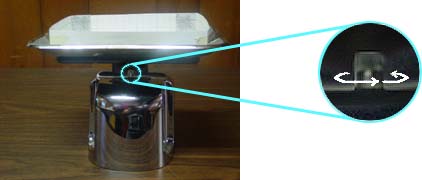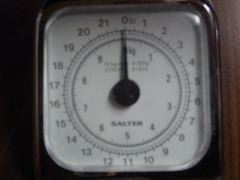Page 2
Measure Surface Area, Volume, and Capacity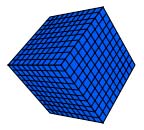

For measuring volume, we will need the width, depth (length), and height.
Count and record these values of this box. You should have gotten 13, 19,
and 3 units as each of these values (these values are interchangeable).
Now let's open the
Volume Applet.
On the center of the page is a model of a box. You can change the
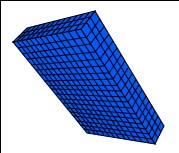 width, depth, and height of this model at the bottom of the page. As you
adjust these dimensions, notice how the values for volume and surface
area change. Set the width,
width, depth, and height of this model at the bottom of the page. As you
adjust these dimensions, notice how the values for volume and surface
area change. Set the width,
 depth, and height to 13, 19 and 3 to see a model of our box.
depth, and height to 13, 19 and 3 to see a model of our box.
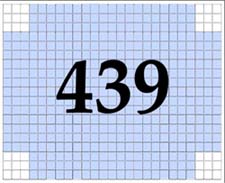
Now, let's think about surface area. Surface area represents everything that you can touch without going inside the box. It is all that is on the surface. Count the number of units on the outside of our finished box. Another method is to count the number of boxes that were not cut into tabs, as shown in the picture to the right. You should get 439 units2. Record this number as surface area for a cut of 3.
Why can't we use the Volume Applet to find our surface area values? Look at the value that we just found (439 units2) and compare it to the value on the applet (686 units2). What is the difference between our box and the model box? The box from the Volume Applet has a top. Our box is an open-box, which means it has one less side than the model box. Therefore, the Volume Applet calculates an extra surface which does not apply to our box.
Surface Area
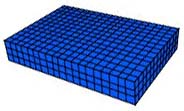 686 units2 |
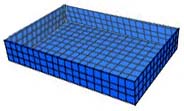 439 units2 |
We will also measure our box's capacity using a scale. First, let's "tare" the scale. With everything but the sand on the scale, including the empty box, set the scale to read 0.0 kg. Depending on the scale, you may do this by turning a nob on the back of the scale as shown in the picture below.
Now we are ready to begin measuring the box's capacity. Pour sand into the box. Using a ruler, or another flat object, level off the top of the box.
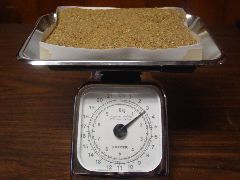
Carefully put the box full of sand on top of the scale and read the value on the scale. Make sure that you are reading the value for kilograms and not for pounds. Record this value as mass for cut 3.
Next we will make and measure other sized boxes in order to collect data for comparison.
| On to page 3! |
